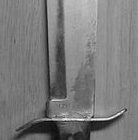|
Listen to this Gambling History blog post here
Getting your Trinity Audio player ready...
|
![]()
Late 1840s-1858
A list of Western United States’ gamblers would be incomplete without William “Lucky Bill” B. Thorington.* A thimblerig master, he plied his craft in the Western mining camps and towns from Sacramento to Ragtown, Hangtown to Salt Lake City, during the late 1840s and ’50s.
Thimblerig, also known as the shell game and three shells a pea, involves maneuvering a small ball of some kind, perhaps of wax or buckskin origin, underneath three cup-shaped receptacles, like thimbles or walnut shells, after which a player bets on which of the three cups the object is under.
Why So Fortunate
Thorington garnered the moniker “Lucky Bill” and became renowned as a gambler who won way more from thimblerig than he lost. That wasn’t due to honest play, though; the charismatic New Yorker was proficient at luring opponents and cheating them in this swindle of a game.
Wherever he went, there were potential victims, people who wanted to play against him, sure they could win and win a lot. And he would take advantage, conning them out of their money and valuables.
“There was always a crowd around him,” Robert K. DeArment wrote in Knights of the Green Cloth.
Thorington was so good at thimblerig, he earned about $24,000 (more than $600,000 today) in Sacramento in only two months’ time in the early 1850s.
How He Worked
The thimblerig ploy involved hiding the small ball in one’s palm before the cups were shuffled around. After the player chose a cup and it was shown it wasn’t the right one, the gambler deftly slipped the orb back under one of the unselected cups at the time of the reveal.
Two techniques existed for picking up and transferring, in Thorington’s case a cork pea, to one’s palm: using a finger or using a fingernail. Thorington relied on the latter and accordingly, always kept his nails long.
In perpetrating the con, he capitalized on his physicality and personality. He reportedly was imposing, about 6’1″ and 200 pounds, handsome, confident, likable and verbally gifted. With a baritone voice he’d entice would-be players this way:
“Here, gentlemen, is a nice, quiet little game conducted on the square, and especially recommended by the clergy for its honesty and wholesome tendencies. I win only from blind men; all that have two good eyes can win a fortune.
You see, gentlemen, here are three little wooden cups, and here is a little ball, which, for the sake of starting the game, I shall place under this one, as you can plainly see — thus and thus and thus. And now I will bet two, four or six ounces that no gentleman can, the first time trying, raise the cup that the ball is under; if he can, he can win all the money that Bill, by patient toil and industry, has scraped together.”
Man With a Conscience
Thorington often returned some of the loot he won off of his subjects, usually with the admonition to never bet against someone playing their own game. Perhaps his own losses, which could be sizable, most often from the hugely popular card game faro, of which he was an enthusiast, inspired his benevolence in this regard.
“Generosity to old friends and destitute travelers often distinguished Lucky Bill,” Sally Zanjani wrote in From Devils Will Reign.
For example, one night his thimblerigging earned him a traveler’s source of livelihood, four oxen. All the man had left was $60 (at least $1,500 today). For the cash, Thorington sold him back one yoke, returned the other one and erased the man’s gambling debt.
“His generosity and his seeming inability to lose in gambling or business were making Thorington into a character of Herculean stature,” wrote Michael J. Makley in The Hanging of Lucky Bill.
His Later Days
In 1852 or 1853, Thorington would make a permanent home in Genoa, Nevada, where his industriousness would involve owning two ranches, constructing a toll road, operating a trading post, building a hotel and occasionally running his thimblerig scam on people passing through.
Only a handful of years later, on June 23, 1858, vigilantes would cut his life short for his alleged part in a murder unrelated to gambling.
* Nineteenth century author Bret Harte based his character Jack Hamlin, a gambler, on William B. Thorington. Hamlin appears in Harte’s short stories, including “The Convalescence of Jack Hamlin,” “A Protegee of Jack Hamlin’s” and “Mr. Jack Hamlin’s Mediation.” Harte is best known for his work depicting Western frontier life during the California Gold Rush.
Photo from Pond5.com: by Exopixel






